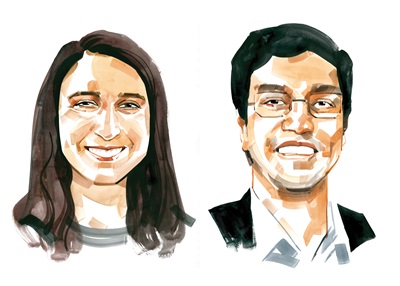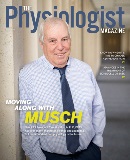Creative Communications
How to maintain a sense of community during the pandemic.

Each issue, we’ll ask a trainee to pose their career questions to an established investigator and mentor. Here, APS Porter Fellow Jeanmarie Gonzalez, a fourth-year PhD student at the University of California, San Francisco, asks Ronaldo Ferraris, PhD, professor of pharmacology, physiology and neuroscience, New Jersey Medical School, Rutgers University, about how to build a community and keep communications open during the pandemic.
Q: How do you maintain a sense of community and creativity
in your lab (and department) without small, organic, in-person interactions during the pandemic?
A: My lab was fortunate to quickly be able to use online communication to maintain a sense of community. Luckily, we were already collaborating with
other laboratories off campus, relying on web-based video conferencing applications for online meetings to discuss experiments and data. Because we had to suddenly shut our doors down, we relied on online communications to coordinate visits to the lab
to initiate procedures like stopping feeding experiments, reducing animal inventory and freezing cells. These online meetings then shifted to lab presentations and journal clubs—though the first few meetings began with informal chats about the pandemic
and how it was affecting our personal lives. To enhance the relevance of our lab meetings, I encouraged my postdoctoral fellow and students to review SARSCoV-2 papers related to our area of research for our journal clubs. In early April, a colleague also
organized a virtual happy hour for the department every Friday late afternoon.
Q: What tips do you have for building solid communication in a socially distant lab environment?
A: This depends on the status or phase of closure/reopening.
When the state of New Jersey was under strict lockdown and only critical on-campus lab research was allowed in the university, I had online meetings with individual laboratory members, discussing their research and what they could do remotely. When staggered
visits and some research were allowed, I met individually with students when it was their turn to visit the lab. We did this in the laboratory where space was much larger, while maintaining social distance and wearing personal protective equipment. It
felt bizarre at first, but eventually we all got used to the “new normal” and our masked appearances.
Q: How does your lab make space to discuss issues of diversity, equity and inclusion in science?
A: My laboratory has always
been very diverse in terms of race and gender, and I have mentored, as well as helped, many master’s students of underrepresented groups to eventual admission in medical and dental schools. We, however, have not been able to discuss, as a lab, important recent events relevant to the issues of diversity.
Q: With time (or resources) in the lab being limited, what advice do you have for trainees in deciding what to prioritize for their own projects?
A: In this unpredictable environment, trainees need to be imaginative and resourceful, while mentors need to be flexible so research can continue even under difficult conditions. I advise students to prioritize experiments that can be done with available
resources. To adapt and remain productive, some students in my lab used archived samples to test a revised version of their original hypothesis while other trainees wrote reviews. While the pandemic created difficulties, it also provided new opportunities in terms of new requests for proposals (RFPs) related to COVID-19. Thus, we reviewed files that could be mined for data relevant to these RFPs and reanalyzed some archived samples to generate preliminary data whenever possible.
Q: What habits and low-time commitment experiences do you think trainees should engage in on a regular basis that would help them prepare for careers in academia?
A: By sheer necessity, the pandemic has popularized a new way of disseminating knowledge. Instead of occasional seminars by experts visiting the campus, numerous webinars are now available for trainees to choose from and attend remotely—and if recordings are available, even attend webinars at their convenience. Attending these webinars is a low-time commitment habit that trainees should engage in on a regular basis to learn new experimental approaches and information. And it would help trainees to remember that if they surmounted difficulties in their research during the COVID-19 pandemic, they may have prepared themselves for the challenges of a research career in academia!
Got a career question you'd like to submit? Email it to tphysmag@physiology.org. We may use it in an upcoming Mentoring Q&A.
This article was originally published in the September 2020 issue of The Physiologist Magazine.
The Physiologist Magazine
Read the Latest Issue
Don’t miss out on the latest topics in science and research.
View the Issue Archive
Catch up on all the issues of The Physiologist Magazine.
Contact Us
For questions, comments or to share your story ideas, email us or call 301.634.7314.


